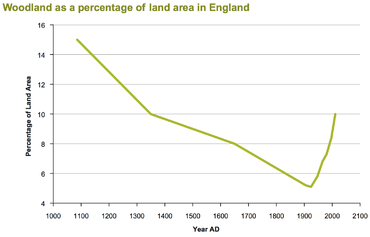In general, I carefully suggest adding the following as a gaming option. Making it possible to restore forests early enough, but before the technology of the conditional 1850th is an extremely problematic occupation.
So: reforestation becomes possible, starting with the "scientific experiment" technology, but remains very time-consuming/expensive. This roughly corresponds to reality. At the beginning of the 16th century, the same Venetians/Frenchmen also understand in principle what needs to be done, but they cannot control it.
Accordingly,
1. Productivity is initially higher with the "feudal aristocracy" and "civil service".
2. Then the bonus is given either directly by the technology of the "administration" or the office.
3. Then the construction of national wonders: enlightened absolutism and romantic art
4. All this works more efficiently if there is access to coal.
5. Naturally, the "microscope". It is, let's assume, responsible for all early biology, including the beginning of scientific forestry.
6. Finally, reforestation becomes relatively easy with the transition to coal metallurgy (blister steel).
7. Well, then everything is clear – the whole line of advanced biology, etc.
This is something that is relatively easy to implement by simply editing XML.
Less conservative: as a result of planting efforts, not the forest itself appears, but an analogue of the savanna – "young forest/woodlands". Turning into a full-fledged forest after N moves. And so is the natural spread of the forest. In an artificial version, this will add difficulties to the process.
I have ideas on how to add MORE sacred realism

, but... It's already laborious there.

 And from a historical realism perspective, it would be really out of character to actually allow players to counteract/prevent it, as that's simply not something people did back then. Hell, even the Sahara is mostly a man-made desert!
And from a historical realism perspective, it would be really out of character to actually allow players to counteract/prevent it, as that's simply not something people did back then. Hell, even the Sahara is mostly a man-made desert!
 . Well, the Oaks are ready now - but our fleet do not need them anymore. Or do they
. Well, the Oaks are ready now - but our fleet do not need them anymore. Or do they  - seems like the ships we have now do not work as intended
- seems like the ships we have now do not work as intended 

 .
.
 , pigs with a camp would be +1
, pigs with a camp would be +1 . This would also make the vast forest spaces that Totestra often generates less of a food desert, since currently no food item other than deer spawns on forests, and those only spawn under special conditions. It's kind of wild that a forest can't help feed a town in RI (unless you're Russian or tundra living).
. This would also make the vast forest spaces that Totestra often generates less of a food desert, since currently no food item other than deer spawns on forests, and those only spawn under special conditions. It's kind of wild that a forest can't help feed a town in RI (unless you're Russian or tundra living). and would eventually deplete the forest altogether, similarly to how slash and burn farms used to work. As it is currently, the yield returned from chopping has been massively reduced while the investment to do so has been massively increased, reversing a major aspect of the "now vs. later" strategic dynamic of whether or not to chop. Other than a major use case for clearing farmland, removing an entire forest as a concerted effort just for the sake of getting rid of it seems to be much less common in history than it simply being depleted due to gathering resources from it without thought for preserving it, and its incompatibility with all non-farm improvements is unwarranted from a realism standpoint as well (and the game even allows most improvements to coexist with forests anyway!), which would make even the rather arbitrary need to randomly completely efface them from the earth in order to build other improvements null, but perhaps situationally less attractive to build there due to retained longer improvement construction times. I think this would model ancient deforestation much better and make for more fun gameplay.
and would eventually deplete the forest altogether, similarly to how slash and burn farms used to work. As it is currently, the yield returned from chopping has been massively reduced while the investment to do so has been massively increased, reversing a major aspect of the "now vs. later" strategic dynamic of whether or not to chop. Other than a major use case for clearing farmland, removing an entire forest as a concerted effort just for the sake of getting rid of it seems to be much less common in history than it simply being depleted due to gathering resources from it without thought for preserving it, and its incompatibility with all non-farm improvements is unwarranted from a realism standpoint as well (and the game even allows most improvements to coexist with forests anyway!), which would make even the rather arbitrary need to randomly completely efface them from the earth in order to build other improvements null, but perhaps situationally less attractive to build there due to retained longer improvement construction times. I think this would model ancient deforestation much better and make for more fun gameplay.
 , but... It's already laborious there.
, but... It's already laborious there.